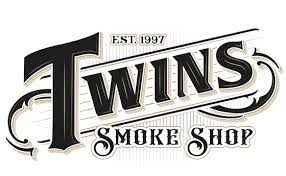-
Shop Twins Cigars Online
- 7-20-4 Lounge
- 7-20-4 BarberShop
- Events
- News
- About Us
- Contact
- Gift Cards
History of Whiskey
May 11, 2024
The History of Whiskey

The history of whiskey is a fascinating journey spanning centuries and continents, marked by innovation, tradition, and cultural significance. Here's a detailed exploration of its origins and evolution:
Ancient Beginnings: The roots of whiskey can be traced back to ancient civilizations in Mesopotamia and Egypt, where early forms of distilled spirits were produced as far back as the 2nd millennium BCE. These early spirits were likely made from fermented grains and served both medicinal and recreational purposes.
Medieval Europe: Distillation techniques spread to Europe during the Middle Ages, with monastic communities in Ireland and Scotland playing a significant role in the development of early whiskey-like spirits. These spirits, known as "aquavitae" or "uisce beatha" (meaning "water of life" in Gaelic), were initially used for medicinal purposes but gradually gained popularity as a recreational beverage.
Emergence in Scotland and Ireland: By the late Middle Ages, whiskey production had become more widespread in Ireland and Scotland, with both countries developing distinct styles of whiskey. In Ireland, whiskey was traditionally made using malted barley and distilled three times for smoothness. In Scotland, the introduction of peat-smoked malted barley led to the creation of Scotch whisky, known for its smoky flavor.
Regulation and Commercialization: In the 17th and 18th centuries, whiskey production became more regulated, with licensing and taxation laws introduced to control the industry. The production of whiskey expanded beyond monastic communities, with commercial distilleries emerging in both Ireland and Scotland. Whiskey began to be exported to other European countries and colonies, contributing to its global popularity.
Industrial Revolution: The Industrial Revolution brought significant advancements to the whiskey industry, with the invention of the column still by Aeneas Coffey in the 19th century revolutionizing production methods. This continuous still allowed for greater efficiency and consistency in whiskey production, leading to the creation of blended whiskies and the expansion of the market.
Prohibition and Repeal: The early 20th century brought challenges to the whiskey industry, particularly in the United States, where Prohibition was enacted in 1920, banning the production, sale, and distribution of alcoholic beverages. Prohibition dealt a severe blow to the whiskey industry, but it also led to the rise of bootlegging and the illegal production of moonshine. Prohibition was repealed in 1933, leading to a resurgence of whiskey production in the United States and around the world.
Global Expansion: In the post-World War II era, whiskey production continued to expand globally, with countries such as Canada, Japan, and more recently, India, producing their own unique styles of whiskey. Scotch whisky and Irish whiskey remained highly regarded, while American bourbon and Tennessee whiskey also gained popularity both domestically and internationally.
Today, whiskey is produced in countries around the world, each with its own regulations, traditions, and styles. It remains one of the most beloved and revered spirits, cherished for its complexity, versatility, and rich cultural heritage.
Also in News
Follow
Twins Smoke Shop - Londonderry
80 Perkins Rd, Londonderry, NH 03053
(603) 421-0242
7-20-4 Lounge
80 Perkins Rd, Londonderry, NH 03053
(603) 421-0242
Follow 7-20-4 Lounge on Instagram
7-20-4 Barbershop
80 Perkins Rd, Londonderry, NH 03053
(603) 421-0242
Follow 7-20-4 Barbershop on Instagram
Twins Smoke Shop - Hooksett
9 W Alice Ave, Hooksett, NH 03106
(603) 421-0242
- Locations
- About Us
- Blogs
- Contact
- Gift Cards
- Refund Policy
- Shipping Costs & Policy
- Privacy Policy
- Terms of Service
Stay In The Loop...




